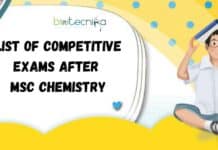Self-cleaning Textiles with Nanostructured Titania By ARCI
Using Nanotechnology, it is now no surprise to be able to wear the ‘Sun Wash’ jean pant and contribute to reducing pollution, breath fresh, save water, and conserve energy!
A team at the autonomous R&D Centre of Department of Science and Technology, Govt. of India, the International Advanced Research Centre for Powder Metallurgy & New Materials (ARCI) are making such wonders possible by developing a ‘Self Cleaning’ and ‘UV protection’ technology.
The ‘self-cleaning’ technology for textiles can save electricity, detergent, and water. To bring this technology to the market, ARCI and Resil Chemicals, a Bengaluru based Private company, worked together. ‘Self-cleaning’ textiles are the first of its kind product commercialized in our country and abroad.
For self-cleaning application, a novel titanium-dioxide based material has been developed at ARCI, Hyderabad. Just by giving sunlight exposure for a few hours, it can clean the organic pollutants and microorganisms, as it is ‘Self Cleaning.’ For this technology’s application and commercialization, the technology has been transferred to the Bengaluru based industry and under the tag ‘Sun Wash’ and ‘Wearable Sun Screen,’ the ‘Self Cleaning’ garments have been launched in the market.
The working of the ‘self-cleaning’ technology
involves the principle of photocatalysis, which leads an excitation of electrons in the molecule to higher energy state leaving behind positive holes at a lower energy level as the active photocatalyst Titanium dioxide absorbs the photons of a certain wavelength in the sunlight. Most of the organic pollutants and microorganisms in its contact are degraded, keeping the surface clean by these photo-induced excited electrons and holes, taking part in the reduction and oxidation process, respectively.
Credits: vigyanprasar.gov.in
At ARCI, the product developed at is in the form of suspension of Titanium dioxide or titania microspheres in water. The particles are specially designed by bandgap and surface engineering and are micrometer in size but possess all the special properties due to the nanometer scale. By a small concentration of ultrafine silver nanoparticles, the titania microspheres were surface modified. By acting as an electron sink, the silver nanoparticles enhance the photocatalytic activity, which in turn enhances the number of electron-hole pairs available for redox reactions. In either the presence or absence of sunlight, it acts as an antibacterial agent.
Any risk related to nanotoxicology is drastically minimized by this special design of the titania microspheres and still provides all the benefits of nano-size, which makes it safe for usage, handling, processing, and manufacturing. The functionality of UV protection and surface brightening is added by the major rutile titania (a form of titanium dioxide) present in it, making the product efficient as a UV light absorber and visible light reflector.
Prof Ashutosh Sharma, Secretary, DST said, “In the past two decades, DST’s National Nanomission has created significant infrastructure, extraordinary knowledge base, and human resources in this globally competitive area. Now there is increasing emphasis on and understanding of nanotech innovations reaching the market.”
Source
Self-cleaning Textiles with Nanostructured Titania















































